#Marie Thérèse of France
Text

Marie Antoinette and her Children, Élisabeth Vigée Le Brun. 1787.
#aesthetic#art#art history#fashion#historical fashion#historical art#women in art#marie antoinette#marie antoinette aesthetic#Maria Antonia of Austria#Marie Thérèse of France#Louis XVII#French royals#bourbon royals#18th century#18th century aesthetic#1700s#1700s fashion#1700s art#France#French fashion#French history#1700s dress#1700s gowns#royal fashion
57 notes
·
View notes
Text

Oil Painting, 1785, French.
By Adolf Ulrik Wertmüller.
Portraying Marie Antoinette in a cream robe à la turque, Marie Thérèse in a white chemise Dress, and Louis Joseph in a blue skeleton suit.
National Museum Sweden.
#Adolf Ulrik Wertmüller#Marie Antoinette#Marie Thérèse of France#1785#1780s#1780s dress#1780s painting#1780s France#1780s child#royalty#robe à la turque#national museum Sweden#louis Joseph of France
36 notes
·
View notes
Text
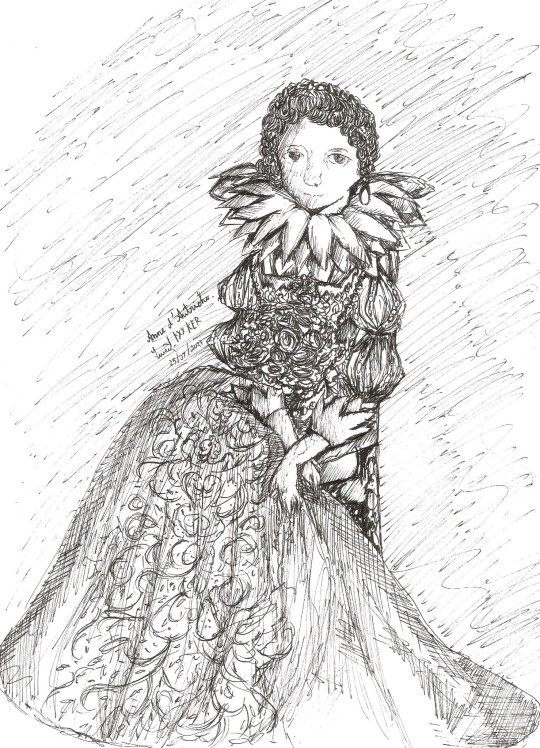

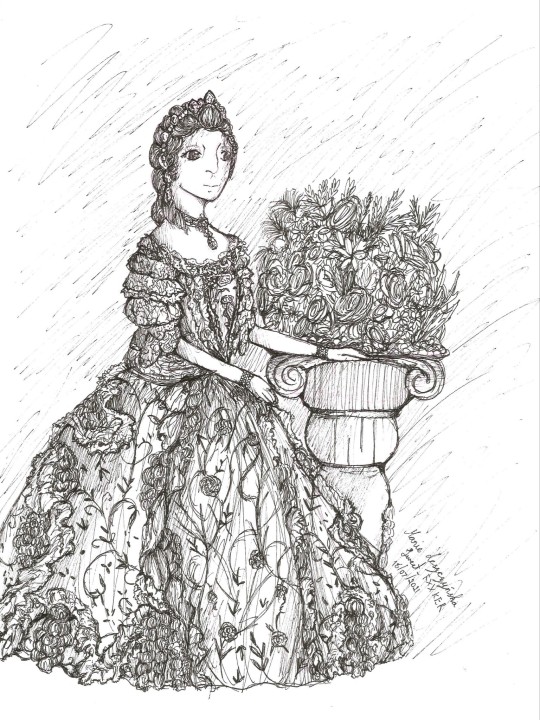


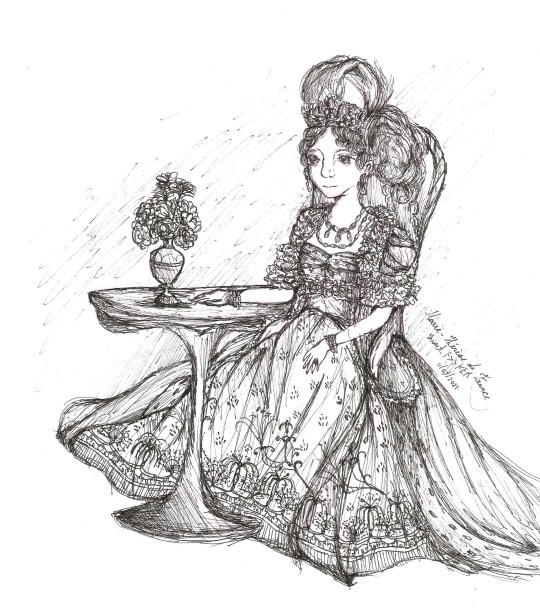
Set Women in House of Bourbon [Black & White]
Fanart by Sweet_FXXKER
#house of bourbon#bourbon#anne of austria#maria theresa of spain#Marie Leczinska#madame de pompadour#Jeanne Antoinette Poisson Marquise de Pompadour#marie antoinette#Marie Thérèse of France#black and white drawing
10 notes
·
View notes
Text







Women in History Month (insp) | Week 4: Dynastic Daughters
#historyedit#perioddramaedit#women in history#women in history month challenge#my edits#mine#marie anne de bourbon-conti#princess hexiao#hanzade sultan#caroline bonaparte#marie-thérèse-charlotte de france#princess fukang#gorgô of sparta#french history#chinese history#ancient greece#17th century#18th century#19th century#11th century#6th century bc#5th century bc
152 notes
·
View notes
Text

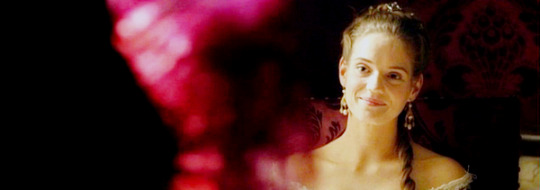





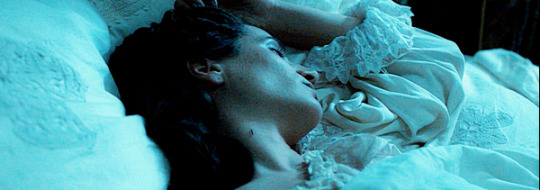


@perioddramasource: PERIOD DRAMA APPRECIATION WEEK
Day Two: Favourite Period Drama TV - Versailles (created by Simon Mirren and David Wolstencroft)
#versailles tv#versaillesedit#perioddramaedit#perioddramaweek2023#noemie schmidt#george blagden#alexander vlahos#evan williams#anna brewster#elisa lasowalski#jessica clark#frances pooley#catherine walker#my edits#heniette d'angleterre#louis xvi#phillipe d'orléans#chevalier de lorraine#madame de montespan#marie thérèse#liselotte von der pfalz#marie louise#madam de maintenon
126 notes
·
View notes
Text

Pierre Balmain Haute Couture Collection Fall/Winter 1953-54.
Marie-Thérèse in a pale blue evening dress (ball gown), strapless, (Dognin fabrics)
Pierre Balmain Collection Haute Couture Automne/Hiver 1953-54.
Marie-Thérèse dans une robe du soir (robe de bal) bleue pâle, sans bretelles, (tissus Dognin)
Photo Philippe Pottier.
#haute couture#pierre balmain#french designer#french style#fashion 50s#1953-54#fall/winter#automne/hiver#dognin#philippe pottier#marie-thérèse#evening gown#robe du soir#robe de bal#ball gown#jolie madame de france
16 notes
·
View notes
Text
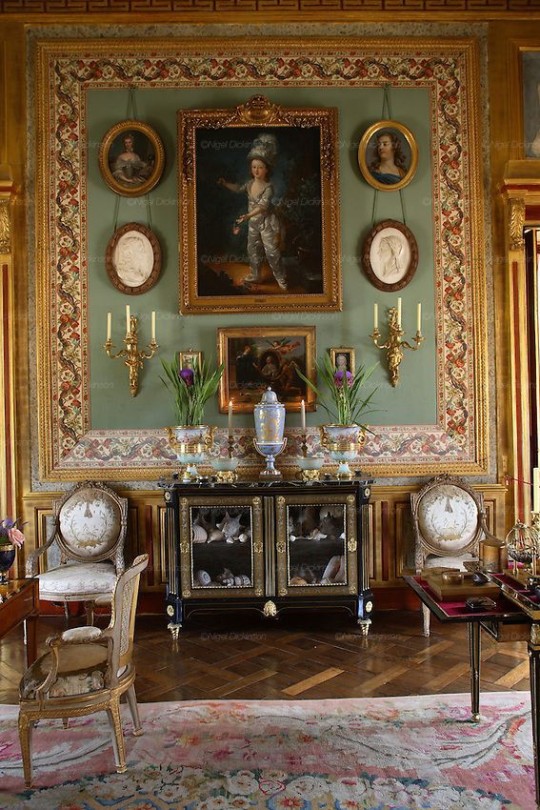
༄Sala de estar, en "Le Château du Champ de la Bataille"
༄El Castillo de "Champ de Bataille" fue construido en el siglo XVII por el Conde Alexandre de Créqui-Bernieulles. Este castillo está situado en la localidad de Sainte-Opportune-du-Bosc, a escasos kilómetros de Neubourg, en la Alta Normandía, en Francia. Desde 1992 pertenece al diseñador Jacques García, que lo ha restaurado y remodelado, para lograr que el aspecto del castillo se asemejara al que tenía en el siglo XVII.
#france#francia#normandía#17th century#château#campo de batalla#marie thérèse#luis xiv#elegance#elegant style#aristocracy#french aristocracy#luxurydecor#luxury
37 notes
·
View notes
Text



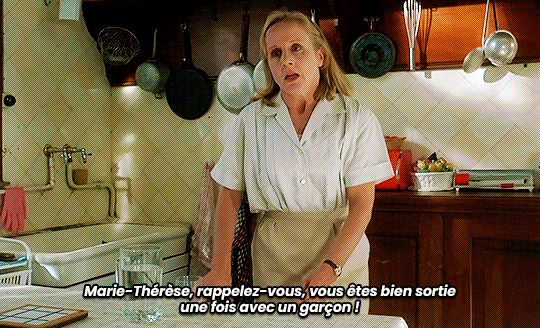

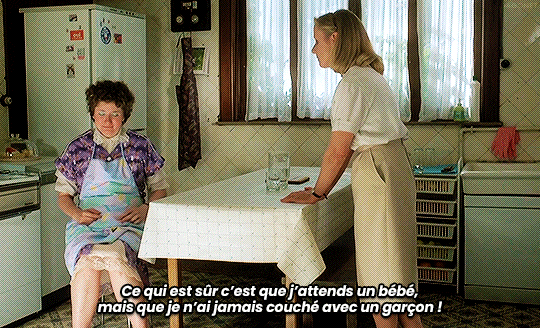
La Vie est un long fleuve tranquille (1988) réal. Étienne Chatiliez
[requested @umi-klouh]
#cet échange iconique je pense qu'elle a juste couché avec une fille en fait#la vie est un long fleuve tranquille#french side of tumbr#what the france#up the baguette#bagaitte#film#catherine jacob#marie-thérèse#hélène vincent#marielle le quesnoy
23 notes
·
View notes
Text
She "does nothing that is not delightful": Marquise Du Parc.
The next candidate for stardom was also a widow, although somewhat merrier. Marquise-Thérèse Gorla, known as Mlle Du Parc, was the opposite of Mlle Des Œillets: she was a less accomplished actress, but beautiful and notorious because of her relationship with Racine. References to her by the gazetteers almost always stress her height and her beauty and her ability as a dancer; she was the grande et belle Mlle Du Parc. Recent scholarship has also made much of her. For instance, in his earliest account of seventeenth-century actors, Les Grands Comédiens du XVIIe siècle, Georges Mongrédien includes biographies of nine actors and one actress: Marquise Du Parc.
[..]
The glimpses we get of Mlle Du Parc over the next few years all testify to her attractiveness to men. When Daniel de Cosnac, for isntance, describes the competition between the Molière-Béjart troupe and the troupe of Cormier to become the prince de Conti's resident company in Pézenas in 1653, he notes that the prince's secretary, Sarasin, favored the Molière-Béjart troupe because he had fallen in love with Mlle Du Parc. And both Pierre Corneille and his younger brother Thomas wrote love poetry to her, although, as Georges Forestier notes, it would be injudicious to assume, as some have, that they were in love with her. To do so would be to
"ignore all the poetic tradition: for Corneille, Marquise was the pretext for a long-distance joust with the great Ronsard on the theme of fugitive beauty and immortality, of the revenge of the aging poet… Thomas Corneille also wrote some verses to her, as if the two brothers were engaged in a little poetic tournament with Marquise as their inspiration."
Molière wrote a verse to her as well, very conventional, remarking on her beautiful complexion, her admirable figure, even her wit. Part of the Molière roman is the belief that he was in love with her or slept with all three of the actresses in the provincial troupe: Madeleine, Marquise, and Catherine de Brie. In fact, there is no hard evidence that he was the lover of either Mlle de Brie or Mlle Du Parc, both of whom appear to have been content with their husbands. André Chagny, in his biography of Mlle Du Parc, concludes that her private life was perfectly correct until after her husband died. And, besides, she was very often pregnant. She had at least five children, three of whom were living at the time of Du Parc's death in 1664.

Sorting out what roles Molière may have written for Mlle Du Parc is not easy, but it does not appear that he featured her or thought of her as a star. We are reasonably sure that none of his major ingenue roles were written for her; those usually went to Mlle de Brie and, later, to Mlle Molière [..]
It was when Molière introduced his comedy-ballets that someone like Marquise Du Parc would have been invaluable. The first of these plays with music was Les Fâcheux, written for Nicolas Fouquet's ill-fated fête at Vaux-le-Vicomte on August 17, 1661 [..] However, even though ballet interludes were normally performed by hired professionals and not by members of the troupe, in this instance Loret writes about:
La Du Parc, that beautiful actress,
With the bearing of an Empress,
Who, whether singing or dancing,
Does nothing that is not delightful.
[..]
Molière found other opportunities to capitalize on the legs, the beauty and the presence of Mlle Du Parc, especially during the famous Plaisirs de L'Ile Enchantée, Louis XIV's 1664 entertainement at Versailles. On the first day she represented "Spring", dressed in green embroidered with silver and multi-colored flowers, and spoke a tribute to the queen Marie-Thérèse..
Virginia Scott- Women on the Stage in Early Modern France: 1540-1750.
#xvii#virginia scott#women on the stage in early modern france#marquise du parc#mademoiselle du parc#actresses#jean baptiste poquelin#molière#nicolas fouquet#louis xiv#marie thérèse d'autriche
8 notes
·
View notes
Text
"...known by the nom de guerre Sans-Gêne (literally "unconstrained"), was a French soldier who fought in the French Revolutionary Wars and Napoleonic Wars. Unlike some female soldiers before the twentieth century, she did not disguise her gender when she enlisted, serving for twenty-two years under her own name in the French Revolutionary Army and the Grande Armée.
(...) The memoirs give no hint of the marriage with Commarmot, discharge from the 15th Dragoons, or transfer to the Hussars; she says that she missed Napoleon's iconic victories of 1796–97 due to serving on garrison duty around Milan, although she does mention her service in Switzerland. Nonetheless, the records confirm the next section of her narrative: she rejoined the garrison element of the 15th Dragoons when the main body of the regiment was in Egypt, and was reassigned to the 9th Dragoons fighting in Italy. Captured briefly (according to the memoir, seized by Austrian hussars and allowed to escape by French royalists), she was subsequently wounded by four sabre cuts at the Battle of Genola on 4 November 1799, having had another horse shot from under her, and was captured a second time. Eventually, she managed to scramble back to the French lines."
1 note
·
View note
Text
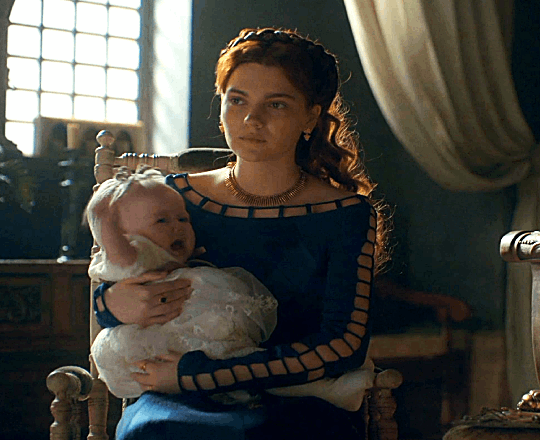

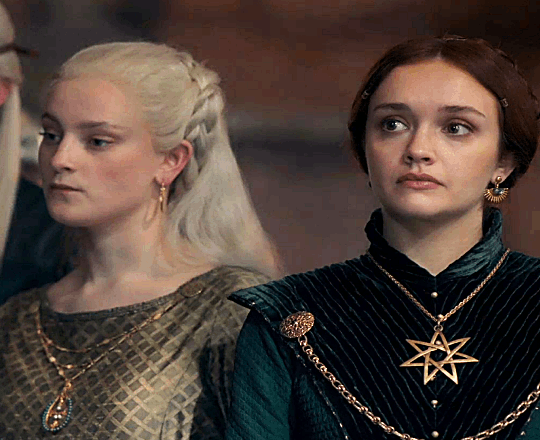
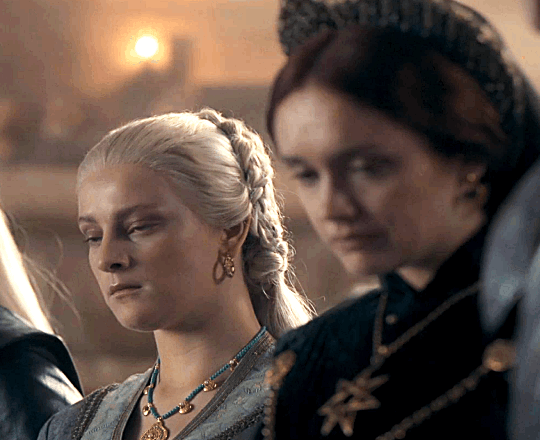


alicent hightower & helaena targaryen
"A boy would have been the Son of France, but you, Marie Thérèse, shall be mine." -Marie Antoinette (2006)
#alicent hightower#alicenthightoweredit#helaena targaryen#helaenatargaryenedit#house of the dragon#houseofthedragonedit#hotdedit#hotdgifs#alicenthightowerdaily#helaenatargaryensource#dailyhotdgifs#corporalicentedit#corporalicentgifs
866 notes
·
View notes
Text
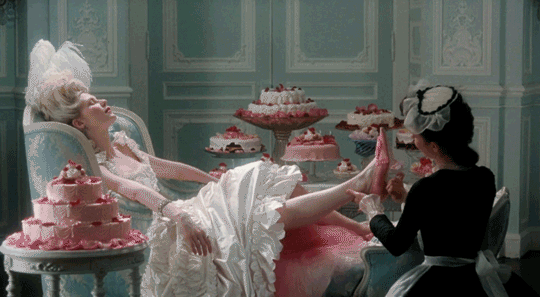




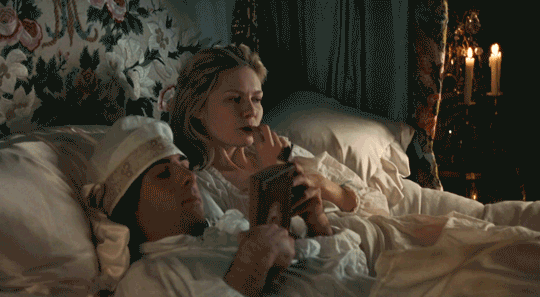


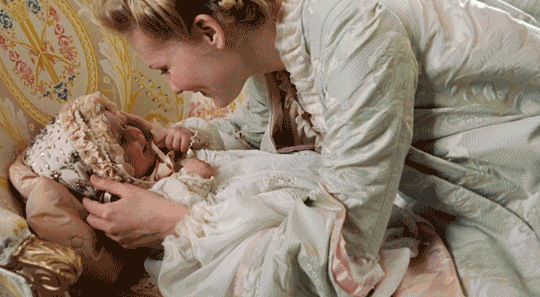


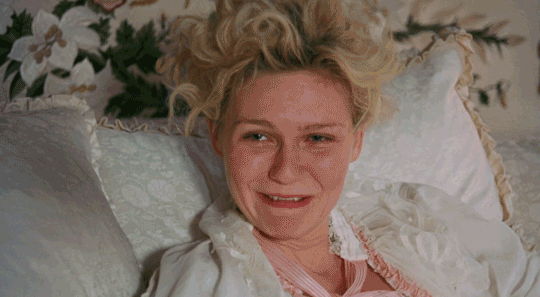
"A boy would have been the Son of France, but you, Marie Thérèse, shall be mine."
↬ Marie Antoinette (2006) | dir. Sofia Coppola
#marie antoinette#sofia coppola#kirsten dunst#filmgifs#filmedit#filmtvcentral#dailyfilmsource#dailyflicks#cinemapix#cinematv#usersource#filmtvdaily#filmtvedit#filmtvgifs#coppoladelreygifs
248 notes
·
View notes
Text

Oil Painting, 1787, French.
By Élisabeth Vigée Le Brun.
Portraying Marie Antoinette in a red velvet dress with black fur trim, with her children.
Château de Versailles.
#élisabeth vigée le brun#marie antoinette#marie Thérèse de France#Louis Charles de France#womenswear#1780s womenswear#1787#1780s#1780s painting#1780s France#red#louis Joseph of France#dress#1780s dress#royalty#ancien regime#château de versailles
76 notes
·
View notes
Text




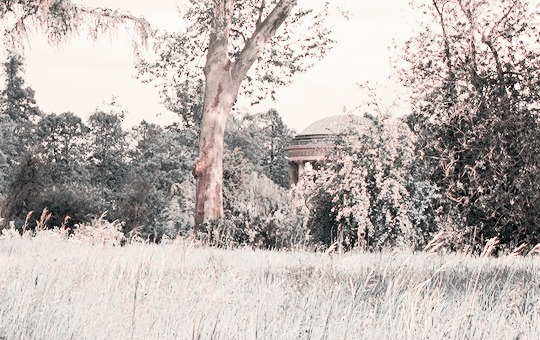
oh, you were not what was desired, but that makes you no less dear to me. a boy would have been the son of france, but you, marie thérèse, shall be mine.
@paletmblr's 30th event: period dramas
marie antoinette (2006) dir. sofia coppola
#filmedit#paleedit#marie antoinette#marie antoinette 2006#**#sofia coppola#its crazy how good this movie looks...#sofia coppola really did invent the tumblr aesthetic back in 2006#and yet i couldnt find good giffable scenes imo. so a picspam it is!#oh god and that ending too.... for some reason it hit me like a truck#ok now im just rambling#paletmblr#paletmblr30#paleresource#userlouise#userjaime#elsamars#ravenclairee#palemakers
101 notes
·
View notes
Text
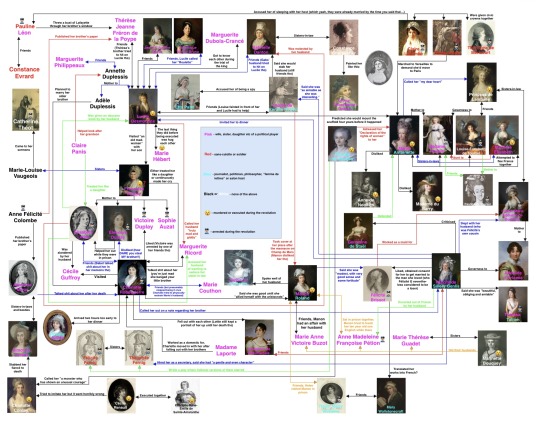
I decided to try this but for the girlies instead.
Are you sure want to click on ”keep reading”?
For Pauline Léon marrying Claire Lacombe’s host, see Liberty: the lives of six women in Revolutionary France (2006) by Lucy Moore, page 230
For Pauline Léon throwing a bust of Lafayette through Fréron’s window and being friends with Constance Evrard, see Pauline Léon, une républicaine révolutionnaire (2006) by Claude Guillon.
For Françoise Duplay’s sister visiting Catherine Théot, see Points de vue sur l’affaire Catherine Théot (1969) by Michel Eude, page 627.
For Anne Félicité Colombe publishing the papers of Marat and Fréron, see The women of Paris and their French Revolution (1998) by Dominique Godineau, page 382-383.
For the relationship between Simonne Evrard and Albertine Marat, see this post.
For Albertine Marat dissing Charlotte Robespierre, see F.V Raspail chez Albertine Marat (1911) by Albert Mathiez, page 663.
For Lucile Desmoulins predicting Marie-Antoinette would mount the scaffold, see the former’s diary from 1789.
For Lucile being friends with madame Boyer, Brune, Dubois-Crancé, Robert and Danton, calling madame Ricord’s husband ”brusque, coarse, truly mad, giddy, insane,” visiting ”an old madwoman” with madame Duplay’s son and being hit on by Danton as well as Louise Robert saying she would stab Danton, see Lucile’s diary 1792-1793.
For the relationship between Lucile Desmoulins and Marie Hébert, see this post.
For the relationship between Lucile Desmoulins and Thérèse Jeanne Fréron de la Poype, and the one between Annette Duplessis and Marguerite Philippeaux, see letters cited in Camille Desmoulins and his wife: passages from the history of the dantonists (1876) page 463-464 and 464-469.
For Adèle Duplessis having been engaged to Robespierre, see this letter from Annette Duplessis to Robespierre, seemingly written April 13 1794.
For Claire Panis helping look after Horace Desmoulins, see Panis précepteur d’Horace Desmoulins (1912) by Charles Valley.
For Élisabeth Lebas being slandered by Guffroy, molested by Danton, treated like a daughter by Claire Panis, accusing Ricord of seducing her sister-in-law and being helped out in prison by Éléonore, see Le conventionnel Le Bas : d'après des documents inédits et les mémoires de sa veuve, page 108, 125-126, 139 and 140-142.
For Élisabeth Lebas being given an obscene book by Desmoulins, see this post.
For Charlotte Robespierre dissing Joséphine, Éléonore Duplay, madame Genlis, Roland and Ricord, see Mémoires de Charlotte Robespierre sur ses deux frères (1834), page 76-77, 90-91, 96-97, 109-116 and 128-129.
For Charlotte Robespierre arriving two hours early to Rosalie Jullien’s dinner, see Journal d’une Bourgeoise pendant la Révolution 1791–1793, page 345.
For Charlotte Robespierre and Françoise Duplay’s relationship, see Mémoires de Charlotte Robespierre sur ses deux frères (1834) page 85-92 and Le conventional Le Bas: d’après des documents inédits et les mémoires de sa veuve (1902) page 104-105
For the relationship between Charlotte Robespierre and Victoire and Élisabeth Lebas, see this post.
For Charlotte Robespierre visiting madame Guffroy, moving in with madame Laporte and Victoire Duplay being arrested by one of Charlotte’s friends, see Charlotte Robespierre et ses amis (1961)
For Louise de Kéralio calling Etta Palm a spy, see Appel aux Françoises sur la régénération des mœurs et nécessité de l’influence des femmes dans un gouvernement libre (1791) by the latter.
For the relationship between Manon Roland and Louise de Kéralio Robert, see Mémoires de Madame Roland, volume 2, page 198-207
For the relationship between Madame Pétion and Manon Roland, see Mémoires de Madame Roland, volume 2, page 158 and 244-245 as well as Lettres de Madame Roland, volume 2, page 510.
For the relationship between Madame Roland and Madame Buzot, see Mémoires de Madame Roland (1793), volume 1, page 372, volume 2, page 167 as well as this letter from Manon to her husband dated September 9 1791. For the affair between Manon and Buzot, see this post.
For Manon Roland praising Condorcet, see Mémoires de Madame Roland, volume 2, page 14-15.
For the relationship between Manon Roland and Félicité Brissot, see Mémoires de Madame Roland, volume 1, page 360.
For the relationship between Helen Maria Williams and Manon Roland, see Memoirs of the Reign of Robespierre (1795), written by the former.
For the relationship between Mary Wollstonecraft and Helena Maria Williams, see Collected letters of Mary Wollstonecraft (1979), page 226.
For Constance Charpentier painting a portrait of Louise Sébastienne Danton, see Constance Charpentier: Peintre (1767-1849), page 74.
For Olympe de Gouges writing a play with fictional versions of the Fernig sisters, see L’Entrée de Dumourier à Bruxelles ou les Vivandiers (1793) page 94-97 and 105-110.
For Olympe de Gouges calling Charlotte Corday ”a monster who has shown an unusual courage,” see a letter from the former dated July 20 1793, cited on page 204 of Marie-Olympe de Gouges: une humaniste à la fin du XVIIIe siècle (2003) by Oliver Blanc.
For Olympe de Gouges adressing her declaration to Marie-Antoinette, see Les droits de la femme: à la reine (1791) written by the former.
For Germaine de Staël defending Marie-Antoinette, see Réflexions sur le procès de la Reine par une femme (1793) by the former.
For the friendship between Madame Royale and Pauline Tourzel, see Souvernirs de quarante ans: 1789-1830: récit d’une dame de Madame la Dauphine (1861) by the latter.
For Félicité Brissot possibly translating Mary Wollstonecraft, see Who translated into French and annotated Mary Wollstonecraft’s Vindication of the Rights of Woman? (2022) by Isabelle Bour.
For Félicité Brissot working as a maid for Louise Marie Adélaïde de Bourbon, see Mémoires inédites de Madame la comptesse de Genlis: sur le dix-huitième siècle et sur la révolution française, volume 4, page 106.
For Reine Audu, Claire Lacombe and Théroigne de Méricourt being given civic crowns together, see Gazette nationale ou le Moniteur universel, September 3, 1792.
For Reine Audu taking part in the women’s march on Versailles, see Reine Audu: les légendes des journées d’octobre (1917) by Marc de Villiers.
For Marie-Antoinette calling Lamballe ”my dear heart,” see Correspondance inédite de Marie Antoinette, page 197, 209 and 252.
For Marie-Antoinette disliking Madame du Barry, see https://plume-dhistoire.fr/marie-antoinette-contre-la-du-barry/
For Marie-Antoinette disliking Anne de Noailles, see Correspondance inédite de Marie Antoinette, page 30.
For Louise-Élisabeth Tourzel and Lamballe being friends, see Memoirs of the Duchess de Tourzel: Governess to the Children of France during the years 1789, 1790, 1791, 1792, 1793 and 1795 volume 2, page 257-258
For Félicité de Genlis being the mistress of Louise Marie Adélaïde de Bourbon’s husband, see La duchesse d’Orléans et Madame de Genlis (1913).
For Pétion escorting Madame Genlis out of France, see Mémoires inédites de Madame la comptesse de Genlis…, volume 4, page 99.
For the relationship between Félicité de Genlis and Louise de Kéralio Robert, see Mémoires de Madame de Genlis: en un volume, page 352-354
For the relationship between Félicité de Genlis and Germaine de Staël, see Mémoires inédits de Madame la comptesse de Genlis, volume 2, page 316-317
For the relationship between Félicité de Genlis and Théophile Fernig, see Mémoires inédits de Madame la comptesse de Genlis, volume 4, page 300-304
For the relationship between Félicité de Genlis and Félicité Brissot, see Mémoires inédites de Madame la comptesse de Genlis, volume 4, page 106-110, as well as this letter dated June 1783 from Félicité Brissot to Félicité Genlis.
For the relationship between Félicité de Genlis and Théresa Cabarrus, see Mémoires de Madame de Genlis: en un volume (1857) page 391.
For Félicité de Genlis inviting Lucile to dinner, see this letter from Sillery to Desmoulins dated March 3 1791.
For Marinette Bouquey hiding the husbands of madame Buzot, Pétion and Guadet, see Romances of the French Revolution (1909) by G. Lenotre, volume 2, page 304-323
Hey, don’t say I didn’t warn you!
#french revolution#frev#marie antoinette#pauline léon#claire lacombe#théroigne méricourt#reine audu#charlotte robespierre#éléonore duplay#élisabeth duplay#élisabeth lebas#lucile desmoulins#louise de kéralio#félicité de genlis#félicité brissot#mary wollstonecraft#manon roland#madame royale#charlotte corday#albertine marat#simonne evrard#catherine théot#madame élisabeth#sophie condorcet#françoise duplay#cécile renault#gabrielle danton#louise sebastien danton#theresa tallien#theresa cabarrus
173 notes
·
View notes
Text
In defense for Marie Antoinette
A long time ago following a passionate debate and good reblogs that you can easily find on Tumblr (if everyone agrees I will put the link), I had fun defending Marie Antoinette (although a fervent sympathizer about the Montagnards).As in two weeks it will be the defense of Manon Roland, I will put this ability to defend to the test by publishing what I had already written about the former queen of France. Here we go:
The problem with Marie Antoinette is that her education was often neglected, and her mother, the Great Marie Thérèse, an excellent politician, instilled in her very conservative ideas, not to mention the fact that she wanted her daughter to become a spy but without the great talent political of her mother. This will be one of the reasons why it will be a great problem when she arrives at the Court.
She won't have the necessary mental strength to face the heaviness of the protocol, and although she caused major problems initially in terms of expenditure, her frankness, unsuitable for a dauphine then a queen, and her frivolity don't help. In addition to the expenses she incurs to please her friends (notably Polignac), wanting to forget the pressure her mother puts on her, despite Louis being a good husband to her, with no children, which is a source of gossip, she decides to increasingly take refuge in Trianon, which again leads to excessive spending, not to mention new clothes. But it's important to note that once she had children, she behaved much less frivolously, more reasonably, less extravagantly, but refused to reintegrate Versailles, which she deemed as heavy and hypocritical (rightly so, but as her mother said, with privileges come duties; if she had made a concession on this side, perhaps she could have obtained less absurd protocol).
Once she had children with her husband Louis XVI, they did everything to ensure that their offspring did not have a high opinion of themselves. Just look at the fact that she wanted her children to dress equally to some of the household children and in her letters indicates that she does not want her daughter to be as arrogant as her aunts. She even tells them that since there are more and more poor people in France, they won't have gifts at a certain period. So she's not a snobbish woman.
Contrary to popular belief, Louis XVI is never influenced by his wife; in fact, she herself knows how to stay in her place as a queen consort and simply prefers to organize certain festivities. But her excessive frankness, rejection of her duties, frivolity in expenditure, and the fact that she sometimes openly shows disdain, for example, for Turgot (one of the few good financial controllers of Louis XVI) will make her the object of all vices in France and a scapegoat for all the decisions of the old Regime.
Do you know who agrees on this point? The revolutionary Saint Just himself in his writings in 1792, who immediately grasped the personality of the Queen in these terms: "Rather deceived than deceitful, rather light than perjured, entirely devoted to pleasure, she seemed to reign not in France but at Trianon."
Moreover, Joséphine de Beauharnais, who was a hundred times more spendthrift and frivolous than her, was much more loved because she took care of her image unlike Marie Antoinette. Perhaps because Marie Antoinette was more frank than her .
In the end, Marie Antoinette stole less from the coffers, so to speak, because her husband wouldn't have let her, and she herself wouldn't have wanted to. Theresia Cabarrus, who profited well from Tallien's scam, was seen as wonderful because she took care of her image. Furthermore, Marie Antoinette clearly displayed her allegiance and stuck to it until the end (although this allegiance was outdated, her mother's conservative ideas about absolute monarchy), faithful to the people she loved (she insisted on sheltering her friends, but Lamballe returned despite the queen's pleas not to do so to support her, faithful to her husband, despite the arranged marriage, because even though she insisted they leave, she didn't want to leave him alone), isn't a friend of the good day only, compared to Cabarrus, who claimed to be imbued with Enlightenment ideas, said she didn't like bloodshed, but in the end, went from one bloody person to another not out of survival (as she liked to say) but out of wealth before marrying a royalist. Yet Theresia and Beauharnais (who took part in the serious scandal during the creation of the Bank of France as a shareholder) did not receive as much criticism.
Of course, we can also understand Marie Antoinette's criticism of Necker, a proud man who is content to borrow and pretend to be more competent than he really is and stabs people in the back (he criticized Turgot but if Turgot hadn't played the "villain," Necker wouldn't have been able to borrow a penny to cover his good reputation not to mention his weather vane attitude and his false attitude as a friend of the people that Marat denounced ), although I don't understand the contempt she had for Turgot.
For her betrayal towards France, I agree with all of you , it's inexcusable, I won't go back on that. What Louis XVI did (primarily him because he was never influenced by his wife, but she also has some responsibility in this regard) is involuntary mass homicide against the French people for the return of absolute monarchy. The problem is that at that time we didn't have the necessary evidence to condemn her (although there was legitim suspicion of the truth), it was a parody and even Saint Just seemed to oppose this execution by telling Robespierre that "this act (the execution) would not benefit national sovereignty." Unfortunately, the person who said this in one of the forums, however, very educated, lost the citation from this book, so let's go cautiously, especially since if the letters had been found, I think Saint Just would have been in favor of the execution of Marie Antoinette. But as mentioned above, at least Antoinette did not betray any ideals, she was clear about that unlike Cabbarus who claimed that she rejected Tallien because of the blood in his hand but then go to Barras, said that she is attired by « les idées lumières » and go to wedding a monarchist, etc., who do not receive as much criticism. But I also understand the hatred she received from Jacques Roux, from a Momoro, and from so many others who never had luxury and found her expenses and behavior legitimately scandalous. But like everyone else outraged and shocked by the behavior of Hébert (and Pache, Chaumette, and Jacques Louis David should not be forgotten even though I like Pache and I find Chaumette unfairly maligned by their best moments it’s was not their best moments and should have died of shame for using such a method, as for Hébert and even to a lesser extent Jacques Louis David, let's not even talk about them).
At least Marie Antoinette unlike other didn’t betrayals the ideas of the revolution unlike some who claimed themself child of the revolution and then betray the revolutionnaries.
If we want to fight against the dishonest people who have blamed everything on people like Saint Just, Robespierre, Couthon, Billaud Varennes (isn't Fouché and Turreau?) we must also do the same thing even for people who are against the revolution even if I agree that the martyrdom of the upper class is tiring and that making Marie Antoinette a pure feminist and innocent icon is just as wrong (but I am here to defend her in this post).
P.S.: I know that Theresia and Joséphine did not harm people unlike their husbands and lovers at least not as much; I do not want to absolve Napoleon, Barras, Tallien; they did not need these women to do what they are reproached for, but to better situate them in relation to Marie Antoinette.
23 notes
·
View notes